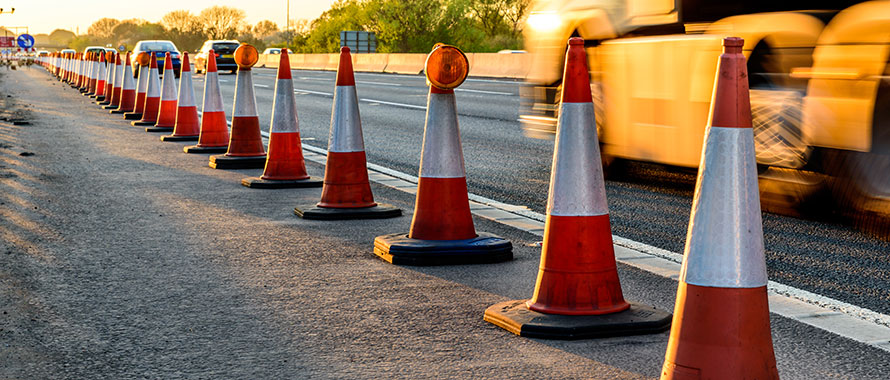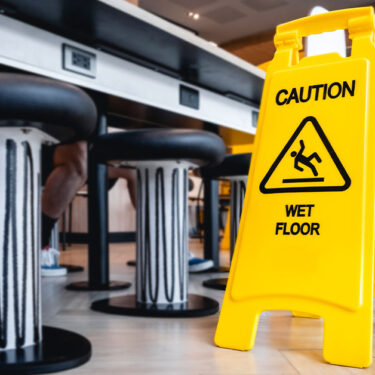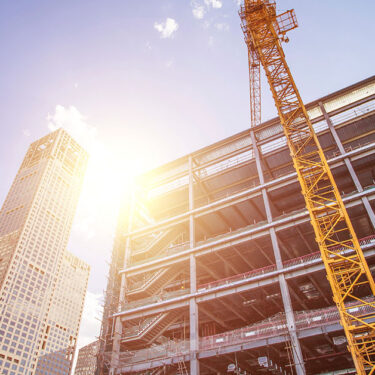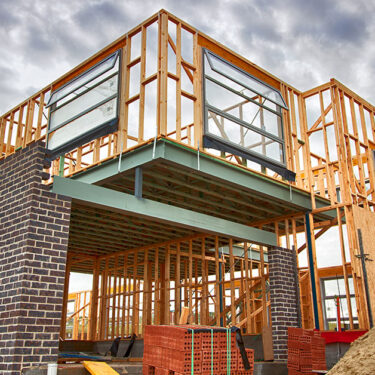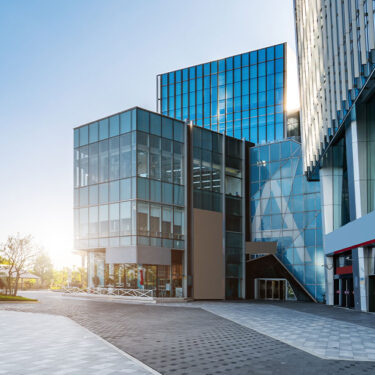A road construction worker was tragically killed on I-94 in Michigan on Aug. 27 after a semi-truck struck the crane that the worker was operating. According to Michigan State Police, the worker was completing bridgework on an overpass near Paw Paw and had attempted to jump from the equipment before it was hit by the semi-truck. The worker died at the scene, while the semi-truck driver suffered non-life-threatening injuries and was transferred to an area hospital.
Officials continue to investigate the accident, which is one of approximately 123 work-related fatalities to occur at road construction sites on average in the U.S. each year, according to the National Institute for Occupational Safety and Health.
“There is a very high risk with construction projects,” said Nicholas Freeman, Associate Managing Director, Broker, Casualty, Burns & Wilcox Brokerage, North Dallas, Texas. “Anytime someone is working at a height or on a busy roadway, there is the potential for serious injury. It does not take a lot for a bad accident to happen.”

Road construction is definitely one of the most hazardous classes of business for Workers’ Compensation Insurance because the severity of the claims tends to be very high.
Construction is one of the most high-risk industries for workplace injuries and deaths. In 2019, it had the most workplace fatalities of all industries with 1,061 worker deaths, which was a 5.3% increase over 2018 figures, Construct Connect reported in December of 2020. Construction companies can help address these risks with strong safety and training protocols in addition to risk transfer through Workers’ Compensation Insurance and Commercial General Liability (CGL) Insurance.
“Road construction is definitely one of the most hazardous classes of business for Workers’ Compensation Insurance because the severity of the claims tends to be very high,” said Justin Dorman, National Product Manager, Workers’ Compensation, Burns & Wilcox, Charleston, South Carolina. “The frequency is not usually as high as other industries, but when an injury happens, it is often pretty severe. That is why it is important to make sure you have the right insurance policies, including Workers’ Compensation Insurance, to pay those benefits.”
Heavy equipment, heights among perils for construction workers
Similar to the U.S., rates of construction work-related deaths have also been rising in Ontario, Canada, where about 20 construction workers are killed on job sites each year, according to a December 2020 Occupational Health & Safety report. Nonfatal construction injuries in the U.S. decreased between 2003 to 2019, Safety + Health magazine reported in February, but rates reportedly remain “consistently and significantly higher” than all other industries combined.
When a worker is injured on the job, Workers’ Compensation Insurance can cover medical bills, partial salary reimbursement if the employee is unable to work, rehabilitation, and vocational training when needed. It can also provide death benefits when a worker is fatally injured. These benefits are regulated by individual states, which may have their own requirements for who is required to carry the insurance and when coverage applies.
“Roofing, road construction, and operations that use heavy equipment are some of the top hazard vectors of Workers’ Compensation Insurance,” Dorman said. “These companies need to make sure that they have all of their safety plans and procedures in place, including safety managers, which can help protect their employees, protect their company, and keep the cost of their Workers’ Compensation Insurance down.”
In August, a contractor for the University of Iowa’s utility system was cited for safety violations in connection with a March 25 accident that involved a steamfitter falling 20 feet from a ladder down a maintenance hatch, according to the Associated Press. The contractor, Engie North America, was cited for five violations and reportedly paid $16,000 in penalties as part of a settlement.
Insurance carriers can help with loss control resources
Keeping up with Occupational Safety and Health Administration (OSHA) regulations is essential, Dorman said. Working with a knowledgeable insurance broker who specializes in the construction industry can help with these efforts.
“Everyone’s intention is to help prevent injuries the best that we can,” he said. “There are so many resources that an insurance carrier can provide, including online video trainings, safety hotlines to call, and even sending somebody out to your business to walk through it with you and share recommendations for updates. They can point out things that could be OSHA violations.”
Having a good relationship with your Workers’ Compensation Insurance carrier is beneficial for multiple reasons, Dorman said. “It can help save you money now and in the long term, and help save your employees from any harm,” he said. “If anything does happen, that relationship will already be built and it will be easier to navigate the claims process.”

If a construction company is hiring new workers, they need to make sure those employees get the proper training. A new employee may not have as much experience and they tend to get injured more often than a seasoned employee.
Worker training sessions should be conducted regularly, along with frequent “toolbox talks” about any safety issues that may arise. Companies should be especially cautious when they hire new employees. Like other industries, many construction businesses are dealing with a shortage of workers. In July, CNN reported that the construction industry will need 430,000 more workers this year and 1 million more over the next two years to keep up with housing construction demands.
“If a construction company is hiring new workers, they need to make sure those employees get the proper training,” Dorman said. “A new employee may not have as much experience and they tend to get injured more often than a seasoned employee. That safety and training element is so important.”
With any construction project, safety is paramount, Freeman agreed. “The more training there is, and the more incentives companies have for employees to follow various protocols, that all tends to have a direct relationship on the number of accidents they have,” he said. “Training goes a long way. You want to make sure your employees are safe and doing what they need to do to keep not only them safe but the contractors and subcontractors, as well.”
Companies can be held liable for third-party injuries on construction sites
In August, a teen cyclist was tragically killed after being struck by a dump truck at a city construction zone in Toronto, Canada, according to a CBC report. In Fall River, Massachusetts, two pedestrians were injured in May when bricks fell from a building’s parapet, knocking one of the pedestrians unconscious, WCVB Boston reported. When a construction company is sued over a construction site accident, its CGL Insurance can help pay for legal expenses and third-party medical costs or settlements.

Anything with street and road projects, there is a high frequency of accidents. Construction companies and contractors are very likely to be pulled into a lawsuit, even if they were not at fault at all.
Road projects, in particular, present a higher risk of general liability lawsuits, Freeman explained, since drivers can be hurt in collisions or by construction debris. When these incidents happen, “anyone who is involved in that work site will generally get brought into a lawsuit,” he said. CGL Insurance may be priced higher for companies working on road projects for this reason, he said.
“Anything with street and road projects, there is a high frequency of accidents,” Freeman said. “Construction companies and contractors are very likely to be pulled into a lawsuit, even if they were not at fault at all. It can be alleged that they did not take the right safety precautions.”
The worker shortage could also heighten that risk, he said. “There is a shortage of construction contractors in a lot of parts of the country, and there can be a lack of skilled employees or those who just do not have enough experience,” increasing the risk of accidents, Freeman said. “Construction accidents are prevalent not just in large cities but anywhere, and it happens at a pretty alarming frequency.”
Even worker injuries covered by Workers’ Compensation Insurance could lead to general liability lawsuits if an injured employee alleges they worked in an unsafe environment, Freeman said. Expenses related to this type of lawsuit could be covered under the employer liability portion of a Workers’ Compensation Insurance policy, or by the company’s CGL Insurance.
“If someone left the job site unsafe, there could be an allegation of an unsafe work environment,” Freeman said. “It is not a far-flung, unusual circumstance; it happens every day. Oftentimes, there is a general liability risk because those policies could potentially pay out more than a Workers’ Compensation Insurance policy.”
Construction companies should know that CGL Insurance can sometimes exclude bodily injury to subcontractors, so it is important to find out what is included in your policy. “You very much want to stay away from that exclusion,” he said. “If you are not sure what is in your policy, ask. What may seem like an innocuous form or exclusion in your policy could lead to bad consequences down the line if there is a loss that is not covered.”
Construction companies should consider work site thefts, contract language
Another source of potential losses in the construction industry is the theft of expensive materials from work sites. According to KJCT 8 News, the Mesa County Sheriff’s Office in Colorado is investigating two recent thefts at different construction sites, with stolen items including lumber, soffit materials, plywood and sheets of foam. The report noted that construction companies have seen thefts of plywood, doorknobs and doors from construction sites “on a weekly basis.”

If you are not sure what is in your policy, ask. What may seem like an innocuous form or exclusion in your policy could lead to bad consequences down the line if there is a loss that is not covered.
This type of risk can be covered by Commercial Property Insurance, Freeman said. Although fencing and other security measures can be helpful, it may not be possible to secure an entire project like a neighborhood with multiple home sites under construction. In this case, common-sense safeguards are advised, including locking up materials or hiring security.
“Anything of value on a construction site could be stolen. There is only so much a construction company can do about that,” he said. “Even with a guard, he or she can only be in one place at a time. If thieves can get in and out unattended, there is a risk.”
From property theft to injuries suffered by workers or third parties, construction companies assessing their risks should pay close attention to their contractual agreements with others involved in the project, Freeman said.
“If there are multiple contractors on-site, there could be a lot of finger-pointing,” he said. “Risk transfer is important. You want to know who is holding who harmless, and who is naming who as an additional insured. If those protections are not in place, you could get brought into a lawsuit because of the lack of proper risk transfer.”
In addition to working with your insurance broker, an attorney who is specialized in the construction industry can help advise companies in this regard. “They should consult an attorney on the exact wording of their contracts,” Freeman said. “The attorney can help guide them even above and beyond what their insurance broker can do.”

